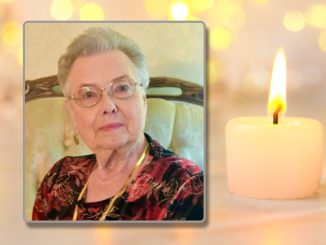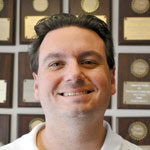
Experienced how science is used to protect country and citizens
When many think about the subject of science, the image of dissecting frogs or mixing chemicals in beakers — before a cartoony explosion, of course — often leaps to mind.
But scientific research is done in the name of enriching, lengthening and, in the case of the U.S. Army, protecting lives. Over the summer, two St. Charles Parish science teachers got to see firsthand exactly how that’s done.
Joan Rome and Tyler Dufrene, both chemistry teachers at Hahnville High School, got the chance to work alongside army research scientists at Maryland’s RDECOM C&B Center, the Army’s principal research and development center for chemical and biological defense technology, engineering and field operations.
Dufrene and Rome were two of just six teachers around the country chosen to work within the program.
The two-week STEM centered program was designed to bring teachers into labs and gain practical knowledge of real-world laboratory science to bring back and apply to their lessons with students.
Rome learned of the opportunity through a friend and applied. After a short time on a waiting list, she was accepted.
“It was a very eye-opening experience, one I will cherish for the rest of my life,” Rome said. “My job is to prepare students for higher-level science applications and this experience has given me new tools and ideas to use with students.”
He said she plans to use what she learned at the center to meet Next Generation Science Standards, a new set of research-based standards developed by states to improve science education for all students. Louisiana is one of 20 states to adopt the new standards.
“Experiment design is a critical component for scientists so it’s one of many things I’m aiming to incorporate into my lessons more frequently to prepare students for undergraduate education,” Rome said.

Dufrene was able to work alongside Dr. Jerry Cabalo and test aerosol biosensors, which Dufrene noted are used to help warfighter aircrafts detect if anthrax is in the air. If the sensors are triggered, an alarm is sounded. Dufrene helped generate bio simulant aerosol and analyzed the data from the Army developed sensor with Cabalo’s guidance.
“I didn’t get to use anthrax, but what we did use has a protein in it and when it passes through a detector, it allows you to see how low a concentration can be used to get through a sensor and still detect it,” said Dufrene, who added that was the core focus of his work over the two weeks.
Dufrene said it’s always been a goal of his to work alongside a distinguished scientist and this program allowed him to achieve just that.
“I had some lab experience in college, but it’s nothing compared to actually doing investigations that truly make a difference in the lives of others,” he said, adding he also enjoyed working with the other teachers at the event as well. “Hearing different perspectives is really interesting to me.”
Those participating in the program were restricted from taking photos of certain areas at the base as they may have involved things considered to be top secret.
Dufrene said one of the most striking parts of the program was the chance to meet a delegation from South Korea, who were working on their own sensor as well.
“One of the most amazing things was one of their scientists was 24. I’m 25,” Dufrene said. “It was really amazing to see such young people actively involved in national security.”
He said being there gave him a new appreciation for what these research scientists to in order to protect the country and for little fanfare or fame.
“All that’s going on behind the scenes, it’s nothing we the public normally think about,” Dufrene said. “But this is all crucial to national security … they’re finding ways to save the world in their own way.”





Be the first to comment